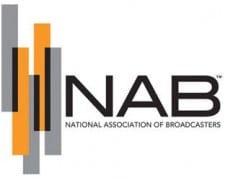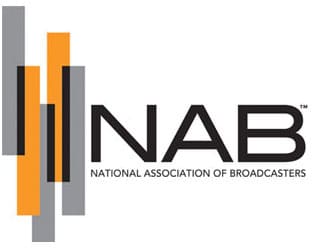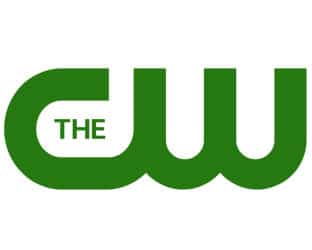 The effort to make use of the swathes of unused spectrum between television stations – the so-called white spaces – for unlicensed use predates even the digital transition. NAB’s VP of Spectrum Policy Patrick McFadden has written a blog post answering some claims from today’s white space proponents.
The effort to make use of the swathes of unused spectrum between television stations – the so-called white spaces – for unlicensed use predates even the digital transition. NAB’s VP of Spectrum Policy Patrick McFadden has written a blog post answering some claims from today’s white space proponents.
Here it is in its entirety.
What to Expect When You Are Expecting (TV White Spaces Comments)
By NAB Vice President of Spectrum Policy Patrick McFadden
Last month, NAB filed a petition asking the Federal Communications Commission (FCC) to amend certain rules governing the use of TV White Spaces (TVWS) devices. In particular, we asked the FCC to require fixed TVWS devices to eliminate the illusory notion of “professional installation,” an undefined concept that allows an installer to enter the location of a device in the TVWS database. We’re asking the FCC to require automatic geolocation capability, and to hold database administrators accountable for falsified information entered into the database.
While oppositions and comments on our petition are not due until tomorrow, the responses are predictable, and, in the public interest we thought we’d provide a little primer to what you are likely to see from TV white space proponents and their proxies.
TVWS COMMENT #1: “NAB cannot identify a single instance of harmful interference caused by an unlicensed device.”
This is a personal favorite, because it’s misleading on so many different levels. First, it’s a little like saying you shouldn’t wear a seatbelt because you haven’t yet had a car accident, or you shouldn’t have homeowners insurance because your house hasn’t yet burned down. No adult uses this approach in real life. Instead, we take reasonable precautions, precisely to avoid bad outcomes we can clearly anticipate. Second, there’s no surefire way to know if there has been harmful interference to licensed services from unlicensed devices. If a television viewer can’t receive a particular channel, she has no way of knowing if that’s due to a neighbor’s use of a TVWS device; she may just assume she can’t receive that channel and give up. Third, there are less than 600 TVWS devices operating nationwide right now. Yes, in the entire United States. Saying TVWS devices haven’t yet caused interference is a little like saying you haven’t yet been attacked by Bigfoot. It’s a true statement, but it doesn’t prove anything, and you probably don’t want to brag about it in public.
TVWS COMMENT #2: “Problem? What problem? The FCC has cleaned up the database.”
Not long after NAB filed its petition, the FCC went to work to clean up the database. TVWS enthusiasts are likely to say that the database has now been thoroughly scrubbed and polished and, as a result, there is no longer a problem. This is the equivalent of a teenager telling his parents he cleaned his room when all he did was shovel everything into the closet and slam the door. What you won’t hear is that anyone – yes, even you! – can register a TVWS device in the database right now, using a falsified location, and get access to channels you should not be able to use. Are you in Washington, D.C. and stuck without a single vacant TVWS channel? Don’t worry! You can easily register your device and enter its location as rural Montana to get access to channels that are currently occupied by local licensed users. This is the result of an obviously broken system destined to lead to interference problems.
TVWS COMMENT #3: “TV White Spaces are really, really cool.”
They may try to distract you. Because they don’t want to acknowledge the problem, and because they can’t deny the risk of interference, one or more TVWS enthusiasts will point at a really shiny object, and hope you look. They’ll wax poetic about the untapped, limitless benefits of more unlicensed spectrum for their corporate financiers. They’ll promise “Super WiFi,” “WiFi on steroids,” increased broadband competition, and expanded rural service. Of course, they won’t acknowledge that there are only a few hundred of these devices operating right now, five years and counting after the FCC approved the current rules.
TVWS COMMENT #4: “NAB’s petition is premature. Don’t worry.”
Kicking the can down the road is a great way to try to outlast the opposition. Some will argue that, even if there is a problem, the FCC can easily fix it later. This is, of course, shortsighted; rumor has it horses are really hard to chase down once they’ve been let out of the barn. Instead, a more reasonable approach is to establish clear rules of the road and allow manufacturers to start incorporating automatic geolocation capability in new devices before the market heats up. If, and it’s a big if, white spaces technology ever actually does live up to the rather large promises its proponents have been making, retrofitting thousands or hundreds of thousands of devices to incorporate geolocation capability will be costly and disruptive. That’s exactly the outcome NAB is trying to avoid.
NAB is eager to create an environment in which TV White Spaces can be used effectively while protecting existing licensed users. That’s why we have proposed only modest rule changes to help make White Spaces work for everyone. The rules already require some TVWS devices to have automatic geolocation capability – we’re merely asking the FCC to extend that requirement to fixed devices, which transmit at high power. We’re also asking the FCC to take the simple step of incorporating some basic accountability into its database administrator rules, so as to avoid the next batch of John Q. Public registrations with addresses in Anytown, USA, and phone numbers of 867-5309. These changes aren’t complicated, and they aren’t costly. Let’s get this done.





